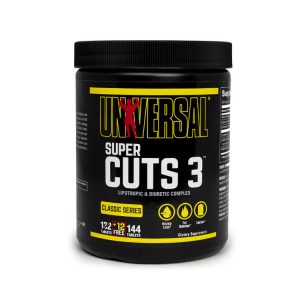Rehab Talk With Jordan “The Muscle Doc” Shallow & Evan Centopani
On the last day of my Universal headquarters road trip, I was afforded a unique opportunity to talk to IFBB Pro and Animal Athlete Evan Centopani about his progress following a quad reattachment surgery he had undergone the previous year. Luckily for me the camera didn’t start rolling at first sight. After the initial fan-boy shock and awe of meeting Evan wore off, we got down to brass tacks and discussed the steps he was taking to get back on track and, most importantly, back on the stage.
Evan had fallen into somewhat of a vicious cycle that a lot of people fall into whether it’s rehabbing nagging, chronic pains or, as in Evan’s case, rehabbing a surgically repaired tendon or muscle. Most people only look to ramp up or scale the stimulus of resistance. They just start light and slowly gauge what that ache/pain or surgical repair can handle, and slowly increase the weights from there. This road has two potential fates: 1) They ramp up the resistance to a very low ceiling of strength, and never reclaim the strength they had prior to the ache/pain or procedure; or 2) the grim reaper of injury is waiting for them at a certain weight threshold and, once crossed, re-injury occurs and the whole process starts over again.
Using weight as the only stimulus is such a common but misguided approach. Thinking that adding weight and building strength is going to fix the problem is like saying that weakness was the initial cause. Does anyone think for a second that Evan had a weak quadriceps group prior to his surgery? No, I don’t think so. But is it hard to believe that Evan had unstable hips or difficulty performing unilateral, loaded and non-loaded body weight movements? Now that’s a slightly more plausible scenario.
But in a gym setting, where the only measure of progress is in kilograms or pounds, it’s hard to step back and recognize that there could be other factors at play. So in Evan’s case, with just a quick evaluation of his hip stability (the ability of his hips to resist force), we found some expected but glaring discrepancies between his top-end strength and overall stability. This is a common underlying presentation with many acute injuries.
So, What’s the Plan?
Evan, being larger than most land mammals, has somewhat of an uphill battle. He is limited in his ability to get his body into the unstable positions required to change the neurological environment of his muscles in a way that prompts them to be stable. Simply put, Evan’s range of motion is so poor that he has a hard time getting into structurally unstable positions that would condition his stabilizing muscles. He will have to spend a lot of time integrating static stretching before attempting hip-stability drills such as single leg Romanian deadlift, walking lunges, and Bulgarian split squats.
This process is going to take a bit extra time to unpack because this is an area in Evan’s training that was neglected prior to surgery, so it’s not as if he’s trying to tap into motor patterns that were at one point present but temporarily unavailable due to the surgery. He’s starting from scratch in this pursuit. At that same time, he is also managing the proper rehabilitation of his quad—there is a very strong link founded in research that the sooner physical therapy starts post surgery, the better the long term outcome.
The Future Is Bright
Whether you’re training with a focus on strength, size, or rehab, success comes down to the mind. Getting to work with an athlete with Evan’s mindset is such a pleasure in my field. Bodybuilders have mental fortitude in spades. They have no need for instant gratification in a sport that demands 100% of you 100% of the time. Evan is used to being focused and determined on a final result, and this will find him well as he continues on his journey back to the stage.

